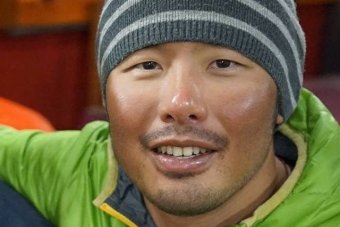 The Australian climber recovering in a Kathmandu hospital after being rescued high up on the northern slopes of Mount Everest has been identified as Canberra man Gilian Lee.
The Australian climber recovering in a Kathmandu hospital after being rescued high up on the northern slopes of Mount Everest has been identified as Canberra man Gilian Lee.
Tibetan climbers found Mr Lee unconscious at an altitude of 7,500 metres last Wednesday.
The ABC understands Mr Lee was attempting to reach the summit without oxygen tanks.
It is unclear whether he fell ill on the way to the summit, or when coming back down the mountain.
The day before his rescue, Mr Lee complained on Twitter that he had a chest infection with a “killer sore throat”.
Mr Lee’s Facebook page shows he was in the Nepalese capital Kathmandu in April, before travelling to the Chinese side of Mount Everest to begin his climb.
Stuck at Chinese Base Camp (CBC) in the days before setting off on his summit attempt, Mr Lee took to social media to vent his frustrations as he waited for conditions to improve.
“Plans getting worse by the day. Lot of wind at the summit from the south side direction,” he wrote on Facebook on May 9.
“[North] side windy as well. Chinese rope fixing team not at CBC so every day of delay is a nightmare.”
According to his blog, Mr Lee’s goal is to climb 14 mountains higher than 8,000 metres without supplemental oxygen or drugs.
This was his fourth attempt to reach the summit of Mount Everest after three unsuccessful attempts in 2015, 2017 and 2018.
“I have put a lot of pressure onto myself. I am running out of [money] to keep chasing this dream,” he wrote on his blog about his latest climbing expedition.
A record number of climbers have died or gone missing on Mount Everest since the beginning of the season.
American climber Christopher John Kulish died on the descent from the summit earlier this week.
That takes the number of people who have perished on the mountain this year to 11.
Most of the deaths on Everest have been blamed on exhaustion, exacerbated by the crowded route to and from the summit on the Nepalese side.
A photograph posted online by former Gurkha Nirmal Purja revealed that climbers were spending hours waiting for their turn to reach the top.
The last time 10 or more people died on Everest was in 2015, when they were hit by an avalanche.
Source: ABC






More Stories
Massive peoples protest against poor economy and shortages in Sri Lanka
Xi Jinping says China will uphold world peace and international law
Brown, Desi, South Asian: Diaspora reflects on the terms that represent, erase them